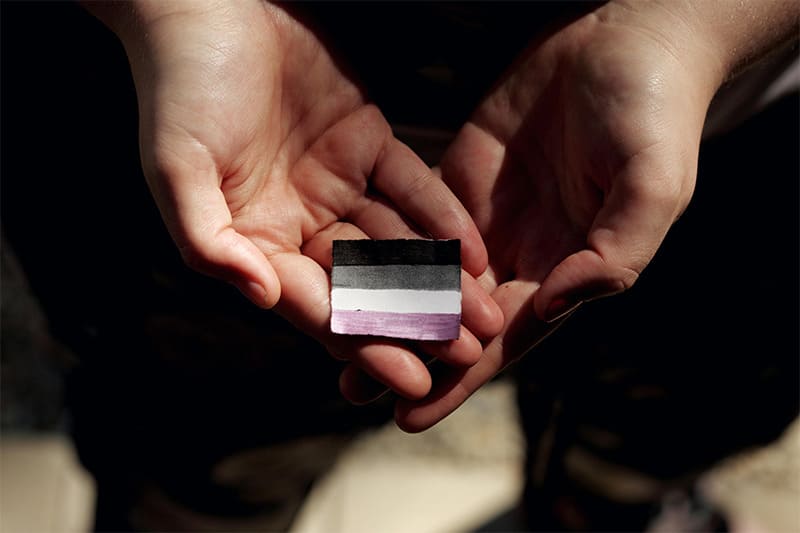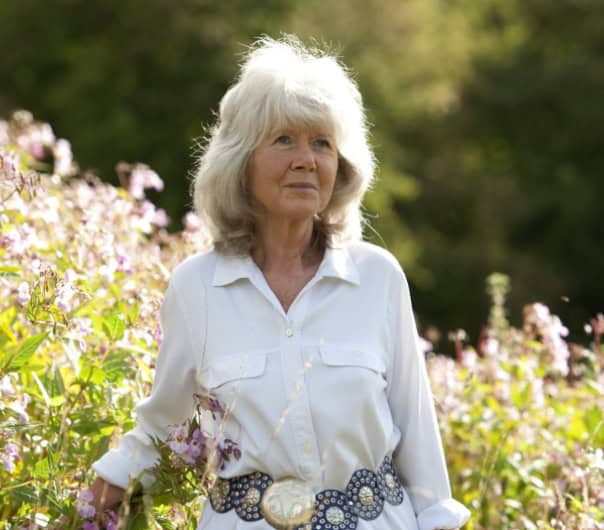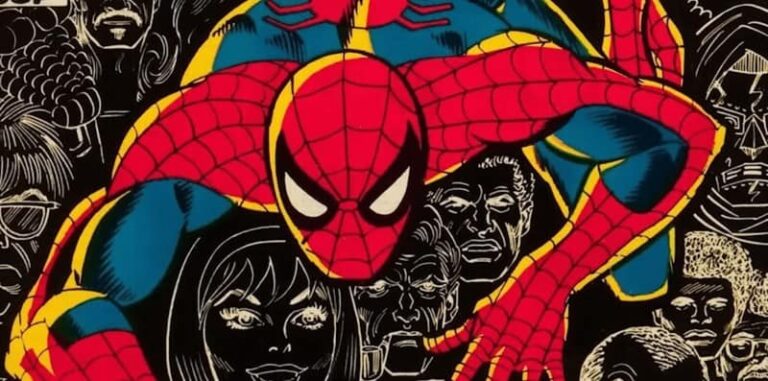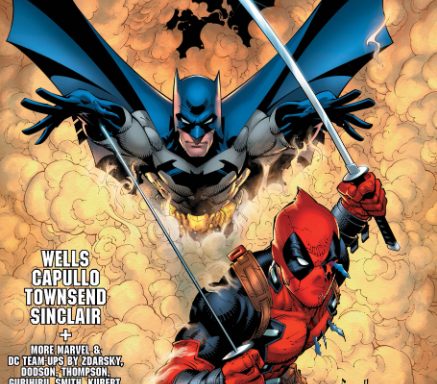Asexuality: The Invisible Orientation (2014) Shines A Light On A Rarely Discussed Sexuality
Asexuality is often called “the invisible orientation” because it’s rarely discussed as often as other sexual orientations are. Rather than being sexually attracted to people of certain sexes and genders, asexual/ace people are defined by their lack of sexual attraction to other people. Ace people are often misunderstood as going through a phase, not finding the right person yet, or hating anyone who likes having sex. They can have trouble finding acceptance when so many people don’t know what asexuality is or think it’s a valid orientation.
Asexual author Julie Sondra Decker lays out what asexuality is and isn’t in her book The Invisible Orientation: An Introduction to Asexuality (2014). She debunks many myths about asexuality, explains how asexuality actually functions and pushes for its acceptance as a valid sexual orientation. Her book is an essential read for ace and non-ace people alike.
Why Julie Decker Wrote The Invisible Orientation
As an openly asexual woman, Julie Decker heard all the common responses people have when someone comes out as ace: You need to get laid. You’re going to die unhappy and alone. You have a disorder and need to get checked out. You haven’t found the right person yet. I can fix you. She was frustrated that everyone seemed to believe there was something wrong with her that she needed to fix or at least be ashamed of. Decker disagreed.
While she had a supportive family and an unshakeable self-esteem that allowed her to continue openly identifying as ace, Decker knew that many people, especially teenagers, lacked the privileges to shield themselves from criticism and social pressure (Decker 11-12). If asexual people constantly heard these negative messages instead of positive ones about the validity of their identities, they could be hurt and face serious difficulties in forming happy relationships with other people.
While supporting the work the Asexuality Visibility and Education Network (AVEN) did to develop a community for ace people, Decker understood that asexuality was still an under-discussed topic. She decided to write a “fairly concise, language-accessible book” about asexuality that laypeople could find in any library or bookstore (Decker 13). While not meant to be the final word on asexuality, The Invisible Orientation would be a good starting point for “newly asexual-identified people and the people who love them” (Decker 13) by exploring asexuality, identifying issues asexual people face and providing resources.
What Asexuality Is And Isn’t
Making up around 1% of the world’s population, ace people are not sexually inclined toward other people. Many don’t view sex as intrinsically worth pursuing, aren’t interested in it, don’t want or enjoy it, or don’t want to make it part of their relationships (Decker 18). As asexuality is an orientation, not a behavior, some ace people completely avoid sex, while others sometimes engage in sex to benefit or show intimacy with their non-ace partners, engage their curiosity, or procreate (Decker 41).
Ace people don’t all view, respond to, or engage or disengage with sex in the same way. They can be sex-negative, viewing sex as disgusting, unappealing, or wrong. They can be sex-repulsed, not liking seeing images of sex or being involved in sexual situations but otherwise respecting other people’s sexual orientations and behaviors. They can be sex-positive, appreciating the value that sexual closeness can bring to relationships and occasionally engaging in sexual activities for non-attraction-based reasons (Decker 42).
Asexuality isn’t a passing phase or an absence waiting to be filled; ace people often have mature adult relationships not based on sex. Asexuality isn’t a decision a person actively makes or the same thing as a vow of chastity or celibacy; it’s just something that happens. Asexuality is not caused by a psychological disorder (having been delisted as a mental health condition from the DSM in 2013), a medical condition (such as a hormone deficiency), or past trauma. While ace people may deal with any of these, there’s no evidence that those things caused their asexuality. It’s healthy for ace people to embrace their asexuality (Decker 24).
Asexuality Is A Spectrum Of Experiences And Identities
Like other sexual orientations, asexuality exists on a spectrum. Some ace people don’t want or think of sex at all. Others might find certain people aesthetically appealing but don’t want to pursue a romantic or sexual relationship with them. Others may pursue platonic relationships, intimate non-sexual relationships, or intimate relationships that occasionally involve sex. Decker makes it clear that all of these expressions inside and outside of relationships are valid for ace people.
Ace people can and do experience various romantic attractions and relationships with other people. Asexual people can be heteroromantic, homoromantic, biromantic, polyromantic, panromantic, or aromantic; they can be in monogamous or polyamorous relationships. Although some people believe that romantic relationships only fully develop when sexual intimacy is involved, ace people and their partners can define intimacy on their own terms, which involves as much comfort, trust, and mutual support as any sexual romantic relationship (Decker 31).
The Rainbow Includes Black, Gray, White, And Purple
While many LGBTQ+ groups welcome any members who express non-heterosexual orientations, others are more reluctant to accept asexual people. Many LGBTQ+ people have argued that asexual people haven’t faced the same levels of systematic oppression, housing and employment discrimination, and public scrutiny that LGBT people have. They feel that asexual people don’t understand the struggles of LGBTQ+ groups or need access to the kinds of resources these support groups provide.
Many asexual people and their LGBTQ+ supporters have pointed out that asexual people do face discrimination and public scrutiny. Ace people have been told their orientation doesn’t exist, subjected to forced medical examinations or conversion therapy, or been correctively raped by people trying to “fix” their asexuality. As more ace people have pushed for greater awareness of their orientation, struggles, and needs, they’ve become more accepted into LGBTQ+ groups and at Pride demonstrations.
Decker argues that asexual people should be included in LGBTQ+ spaces. Though they might not face the same discrimination as LGBTQ+ people, they’re still discriminated against by people who deny their orientation and call them abnormal for not valuing sex as highly as others do. Since their experiences are often ignored, they also have less access to information, community, or support to help foster their safety and happiness (Decker 57). Asexual people can contribute different perspectives on non-sexual relationships to LGBTQ+ groups, provide moral support for others, and show others how to better respect ace people (Decker 59).
What If You’re Asexual or Know Someone Who Is
If readers are speculating whether they might be asexual, Decker explains that it’s entirely up to them to decide whether they are and want to self-identify as such (Decker 143). She lists common experiences that asexual people have so the reader can determine whether they feel the label fits them. She notes that readers don’t need to think of asexuality as a lifelong commitment; as sexual orientation is fluid, they may realize later that asexuality no longer accurately describes their identity (Decker 146).
Decker explains how someone can come out as asexual if they choose to and feel safe and comfortable doing so. She explains how to handle and address criticism that family members, friends, and others might have about a person’s asexuality. She discusses how to navigate relationships where one partner realizes they’re asexual. In these scenarios, she makes it clear that the asexual person deserves respect and their safety and health is tantamount (Decker 151). She also provides links to groups and forums where asexual people can meet and discuss their experiences with other asexual people.
For readers who don’t identify as asexual, Decker shares some advice on how to be a good ally. Non-asexual people should listen when an asexual person comes out and talks about their experiences; they should be open to understanding and learning what asexuality is and means (Decker 165). They shouldn’t assume incorrect things about asexuality or believe that everyone needs or desires sex. They should own up to any mistakes that may have made an asexual person they know uncomfortable and respect asexual people even if there are none nearby to appreciate it (Decker 186).
Why The Invisible Orientation Spoke To Me
Growing up, I hoped one day to find a partner, get married, and have children; after all, that’s what society told me everyone who lived a normal, happy life did. During college, I realized that’s not what I wanted out of life, but I didn’t understand why. Sometimes, I thought there was something wrong with me since I had no desire to date or marry anyone. I didn’t know how to talk about it with other people; I didn’t even know anyone who felt like I did. Would anyone else understand what I felt if I told them that? Would they think I was weird, messed up, a loser, or worse?
When I stumbled on and started reading Julie Decker’s blog and book, I finally found the words I was looking for. When she discussed discovering her own lack of sexual attraction and realizing that she was asexual, I instantly recognized my own experiences. She was proudly asexual; she didn’t think she was incomplete or less of a human being for being so. She saw her orientation as just as valid as anyone else’s and argued that no one should feel pressured to express sexual attraction or behavior if they didn’t want or feel it.
The Invisible Orientation was monumentally important in helping me realize I was asexual and giving me the confidence to come out as asexual to people I knew. Although I also faced pushback from people who thought I just hadn’t found the right person or was too young to say I wasn’t interested in sex or marriage, I’ve been openly asexual for many years now, and my family and friends have accepted my identity. I have Decker to thank for that.
Final Thoughts
Asexuality is an often underrepresented and misunderstood sexual orientation. Asexual people, too, have often been mischaracterized as sex-hating, emotionally underdeveloped, or psychologically or medically unwell. Resources like The Invisible Orientation are important for pushing back against inaccurate, negative stereotypes about asexuality and showing that asexual people are fully realized human beings who don’t need sex to lead fulfilling lives.
Asexuality is a real sexual orientation, and asexual people deserve understanding and respect. If you identify as asexual, are wondering if you might be asexual, or know someone who is asexual, The Invisible Orientation is a fantastic book to read if you want to understand more about asexuality.
For More Great Content
Total Apex is an all-encompassing content producer. We provide heavily detailed articles every day on entertainment, gaming, sports, and so much more! Check out all our great sports content at Total Apex Sports. Check us out on X @TotalApexEandG and our other sites: Total Apex Sports Bets and Total Apex Fantasy Sports.







